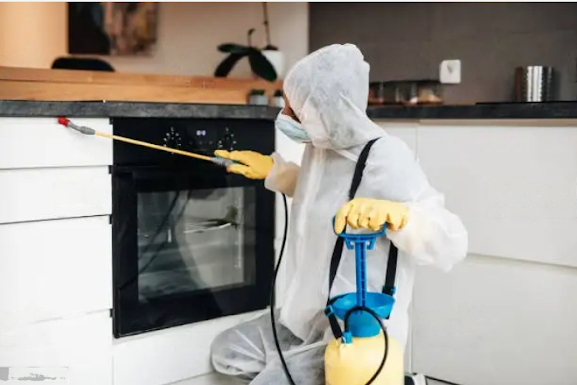How to Take Back Your Home with Strategic Pest Control?
Your home should be a haven of comfort and relaxation, a place where you can unwind and escape from the stresses of the outside world. However, when pests invade, they can quickly turn your sanctuary into a source of frustration and discomfort. From ants and cockroaches to rodents and termites, pests can wreak havoc on your property, jeopardizing your peace of mind and the safety of your family. But fear not – with strategic pest control Epping measures, you can reclaim your home and restore it to its rightful state of tranquility. In this article, we'll explore how to take back your home with strategic pest control.
1. Identify the Problem Areas
The first step in reclaiming your home from pests is to identify the problem areas where pests are most active or likely to enter. Conduct a thorough inspection of your property, both indoors and outdoors, paying close attention to areas such as:
- Entry points, including doors, windows, and vents.
- Kitchens, bathrooms, and other areas where food and water are abundant.
- Basements, attics, and crawl spaces where pests may seek shelter.
- Exterior walls, foundations, and landscaping features that may attract pests.
By pinpointing these problem areas, you can develop a targeted pest control strategy to address and eliminate pest activity effectively.
2. Seal Entry Points
Once you've identified the entry points used by pests to access your home, take proactive measures to seal them off and prevent future infestations. Use caulk, weatherstripping, or mesh screens to seal gaps around doors, windows, pipes, and utility lines. Repair damaged screens, vents, and roof tiles to deny pests entry into your home. By eliminating these entry points, you can significantly reduce the likelihood of pests infiltrating your living space.
3. Practice Good Sanitation
Pests are attracted to sources of food, water, and shelter, so practicing good sanitation is essential for deterring pest activity in your home. Keep your kitchen clean and free of crumbs, spills, and food debris by wiping down surfaces, sweeping floors, and emptying trash bins regularly. Store food in airtight containers and promptly clean up pet food and water bowls. Additionally, minimize clutter and eliminate potential hiding spots for pests by decluttering and organizing your living space.
4. Remove Standing Water
Standing water is a breeding ground for mosquitoes, flies, and other pests, so it's important to eliminate sources of stagnant water around your property. Repair leaky faucets, unclog gutters, and remove debris from drains to prevent water accumulation. Empty and clean birdbaths, flower pots, and other outdoor containers regularly to prevent mosquitoes from breeding. By reducing moisture levels and eliminating standing water, you can make your home less hospitable to pests.
5. Trim Vegetation
Overgrown vegetation provides hiding spots and shelter for pests, so it's important to keep your yard well-maintained to deter pest activity. Trim bushes, shrubs, and trees away from your home's exterior to create a buffer zone and reduce the risk of pests gaining access to your property. Additionally, rake leaves, remove dead vegetation, and keep grass mowed to minimize hiding spots for pests and discourage them from taking up residence in your yard.
6. Implement Pest Control Measures
In cases of severe pest infestations or persistent pest problems, implementing pest control measures may be necessary to regain control of your home. Consider using traps, baits, or insecticides to target specific pests and eliminate them effectively. For larger infestations or complex pest issues, enlist the services of a licensed pest control professional who can provide expert advice and tailored solutions to address your pest problems.
7. Monitor and Maintain
Once you've implemented pest control measures, it's important to monitor your home regularly and maintain your efforts to prevent future infestations. Conduct routine inspections of your property to check for signs of pest activity and address any issues promptly. Continue practicing good sanitation, sealing entry points, and removing standing water to create an inhospitable environment for pests. By remaining vigilant and proactive, you can keep pests at bay and enjoy a pest-free home year-round.
Conclusion
Taking back your home from pests requires a strategic and proactive approach to pest control. By identifying problem areas, sealing entry points, practicing good sanitation, removing standing water, trimming vegetation, implementing pest control Point Cook measures, and monitoring and maintaining your efforts, you can reclaim your home and restore it to its rightful status as a sanctuary of comfort and tranquility. Don't let pests disrupt your peace of mind – take action today to regain control of your living space and enjoy a pest-free environment for years to come.


Comments
Post a Comment